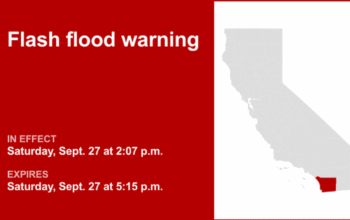Warganet – This blog post explores tropical cyclones, their formation, and the significance of effective forecasting and advisories. Understanding these intense storms is crucial for public safety and disaster preparedness. The article delves into the processes that lead to tropical cyclones, the role of technology in forecasting, and the importance of timely advisories in mitigating risks. Communities can enhance their safety by staying informed, preparing appropriately, and utilizing the latest weather resources. Learn how understanding tropical cyclones can protect lives and property from severe weather events.
Introduction to Tropical Cyclones
Tropical cyclones are intense circular storms that form over warm tropical oceans and are characterized by low atmospheric pressure, strong winds, and heavy rain. These systems arise in regions where sea surface temperatures exceed 26 degrees Celsius, typically in the tropics, and can lead to hazardous weather conditions and substantial destruction. Understanding the formation and characteristics of tropical cyclones is essential for forecasting their impact and for the broader field of meteorology.
The development of a tropical cyclone begins with the combination of warm ocean waters, high humidity in the atmosphere, and pre-existing weather disturbances. As warm moist air rises, it creates an area of low pressure beneath. As the air moves in towards the low-pressure center, it heats up and rises, resulting in a release of latent heat, which further fuels the storm. This process creates a self-sustaining cyclone that can continue to grow and strengthen. Tropical cyclones are categorized into different classifications: tropical depressions, tropical storms, and hurricanes or typhoons, depending on their sustained wind speeds.
The significance of tropical cyclones extends beyond their immediate impacts on weather. They provide valuable insights into climate patterns and variations. Researchers study these storms to assess their behaviors and relationships with broader climatic factors such as El Niño and climate change. Accurate forecasts and advisories related to tropical cyclones play a critical role in preparedness and response efforts, helping to mitigate the risks posed to coastal communities. As global warming continues to alter oceanic and atmospheric conditions, understanding tropical cyclones becomes even more vital for effective disaster management and environmental protection.
The Importance of Tropical Cyclone Forecasts
Tropical cyclone forecasts play a critical role in safeguarding public safety and enhancing disaster preparedness. These forecasts provide essential information that supports communities in taking proactive measures to mitigate the risks associated with tropical cyclones. By offering accurate and timely predictions, meteorologists enable individuals, businesses, and local governments to make informed decisions that can significantly reduce the potential impact of these severe weather events.
The timely dissemination of cyclone forecasts ensures that communities are well-prepared before a storm strikes. With alerts indicating the possible trajectory and intensity of a tropical cyclone, residents can evacuate if necessary, secure their properties, and gather essential supplies. This advance warning is crucial, as studies have shown that communities with robust warning systems experience less damage and fewer casualties. Forecasts can also inform authorities when to activate emergency response strategies, deploy resources, and implement public safety measures.
Infrastructure resilience is another vital aspect influenced by cyclone forecasts. Local governments can use forecast data to reinforce critical infrastructures such as bridges, roads, and utilities, ensuring they can withstand the effects of a tropical cyclone. In addition, businesses can assess the risk of business interruption and take preventive actions that can save time and money. Such preventive measures become increasingly important as climate change trends lead to more intense and erratic storm patterns.
Furthermore, the importance of tropical cyclone forecasts extends beyond immediate safety measures; they play a key role in long-term disaster planning and recovery initiatives. Communities that regularly incorporate forecast data into their emergency management practices are better equipped to build resilience against future storms. Ultimately, the significance of effective tropical cyclone forecasts cannot be overstated, as they are indispensable for public safety, infrastructural integrity, and overall disaster preparedness efforts.
Understanding Tropical Cyclone Advisories
Tropical cyclone advisories play a crucial role in providing timely updates and essential information during cyclone events. Unlike forecasts, which are long-term predictions of a cyclone’s development and path, advisories offer real-time alerts concerning the evolving situation. These advisories are released by meteorological agencies and serve as immediate guidance for both the public and decision-makers, emphasizing the imminent risks and recommended actions.
The core purpose of tropical cyclone advisories is to inform and prepare individuals and communities for potential impacts. They include details on the storm’s current location, intensity, movement, and expected changes. Moreover, advisories highlight protective measures and evacuation recommendations to ensure safety during severe weather conditions. The difference between advisories and forecasts is pivotal; while forecasts provide a broader view of a cyclone’s expected trajectory over a longer time frame, advisories focus on immediate threats and necessary precautions.
In establishing a clear line of communication, advisories are distinguished by their urgency. They are updated frequently, often every few hours, to account for the latest meteorological data and satellite imagery. This dynamic nature affirms the significance of advisories in emergency management. They empower individuals and communities to respond effectively to hazardous circumstances. The language used in advisories is concise, aiming to convey critical information rapidly and clearly, avoiding technical jargon that might be confusing to the general population.
Additionally, the role of tropical cyclone advisories extends beyond meteorological information; they serve as a vital link between scientists, emergency services, and the public. As such, understanding these advisories is essential for effective disaster preparedness and response, enabling those in affected areas to make informed decisions that can save lives and mitigate damage.
Tropical Weather Outlook: What You Need to Know
The tropical weather outlook is a vital tool that serves as a preliminary assessment regarding potential tropical cyclones. This type of forecast is crucial for understanding the likelihood of developmental storm systems over the ocean. The primary objective of a tropical weather outlook is to provide timely information, enabling individuals and communities to prepare for the possibility of severe weather events stemming from tropical disturbances.
Typically issued by meteorological agencies, the tropical weather outlook outlines areas of interest where conditions may favor the formation of tropical cyclones. These advisories, which can be updated frequently, are based on satellite imagery, atmospheric models, and analyses of oceanic conditions. The forecasts help to indicate both the potential for tropical cyclone development and the expected track that a system may take if it forms.
The significance of the tropical weather outlook extends beyond mere forecasts; it plays an integral role in early warning systems used to mitigate risks posed by tropical storms. By keeping the public informed about developing systems, governments and organizations can implement safety measures, ensure readiness, and protect lives and property. The dissemination of information from these outlooks helps in shaping emergency responses and informing residents about potential threats.
Additionally, the tropical weather outlook also assists in the planning of evacuations or other emergency procedures for communities that may be affected by severe weather. This proactive communication strategy can make a marked difference in minimizing impacts when a tropical cyclone approaches, ultimately enhancing public safety and resilience in the face of natural disasters.
Audio and Podcasts on Tropical Weather
In recent years, the consumption of audio resources has become increasingly popular among individuals seeking information on various topics, including tropical weather. Podcasts in particular have emerged as a dynamic medium for disseminating knowledge about tropical cyclones, their forecasting, and related advisories. These audio formats provide an opportunity for listeners to gain insights from experts, understand complex meteorological concepts, and receive real-time updates about current weather systems.
Many meteorological organizations and private entities have initiated podcasts specifically focusing on tropical weather. These programs often feature interviews with meteorologists, climatologists, and other specialists who offer their expertise on topics such as cyclone formation, prediction models, and impact assessments. By tuning into these discussions, listeners can develop a deeper understanding of how tropical cyclones are monitored and forecasted. This targeted audio content not only educates the public but also raises awareness about the importance of preparation and safety during severe weather events.
Additionally, some podcasts incorporate listener engagement, allowing the audience to submit questions or share their experiences related to tropical weather. This interactive element fosters a community of informed listeners who can exchange information and support one another during active cyclone seasons. Furthermore, these audio resources frequently include segments that highlight historical cyclone events, showcasing lessons learned and improvements made in forecast technology and dissemination practices.
As the reliance on mobile devices increases, audio podcasts offer a convenient way for individuals to stay informed about evolving tropical weather conditions. With updates available on various platforms, listeners can access timely information at their convenience, helping them to better understand and respond to tropical cyclones and related phenomena.
Marine Forecasts and Their Relevance
Marine forecasts play a critical role in the context of tropical cyclones, providing essential information to sailors, fishermen, and coastal communities. These forecasts primarily focus on predicting weather conditions over ocean waters, especially during severe weather events such as tropical cyclones. By offering insights into wind speeds, wave heights, and potential storm paths, marine forecasts help stakeholders make informed decisions to ensure safety and reduce risks associated with maritime activities.
For sailors and fishermen, understanding marine forecasts can mean the difference between a successful venture and a potentially dangerous situation at sea. Tropical cyclones can rapidly intensify and change course, creating unpredictable and hazardous conditions. Marine forecasts provide vital updates regarding the movement of these storms, allowing mariners to adjust their routes or seek shelter when necessary. The data shared in these forecasts includes not only current weather conditions but also anticipated changes, which is crucial for planning safe operations.
Moreover, marine forecasts use a range of data sources, including satellite imagery, buoys, radar, and computer modeling to create accurate and timely updates. Meteorologists analyze this information, assessing atmospheric conditions and sea surface temperatures, to generate forecasts that highlight potential impacts from incoming tropical cyclones. These forecasts are disseminated through various channels such as official meteorological services, mobile applications, and marine radio broadcasts, ensuring that those at sea have access to real-time updates.
In coastal communities, marine forecasts are equally important. They support local governments and organizations in preparing for potential impacts from tropical cyclones, such as flooding and high winds. By understanding forecasted conditions, coastal dwellers can take necessary precautions, thereby enhancing community resilience against the forces of nature.
Offshore Waters and Cyclone Preparedness
Tropical cyclones present a significant threat to offshore waters, where the open sea conditions can rapidly deteriorate. Mariners and coastal facilities must be aware of the unique challenges posed by these powerful storms. One of the foremost concerns in offshore environments is the unpredictability of cyclone paths and intensities, which can change abruptly, leading to hazardous conditions that may endanger lives and property.
Preparedness strategies for mariners include closely monitoring weather forecasts and cyclone advisories. Utilizing advanced weather tracking technologies and resources, such as satellite imagery and real-time updates from meteorological services, can significantly improve situational awareness. Mariners should also familiarize themselves with safe harbor options and ensure their vessels are equipped with necessary safety gear, including life jackets and emergency beacons. It is advisable to conduct regular safety drills on board to reinforce the importance of adhering to protocols during adverse weather conditions.
For coastal facilities, preparing for the impact of tropical cyclones involves implementing robust risk management strategies. These strategies may encompass structural reinforcements to docks and piers and establishing emergency response plans in collaboration with local authorities. Facilities should maintain robust communication networks to ensure timely dissemination of information regarding cyclone watches and warnings. Ensuring that staff is well-trained in evacuation protocols and safety measures helps mitigate risks associated with cyclone events.
Moreover, adequate insurance coverage for vessels and coastal operations is crucial to safeguard against potential damages incurred during a tropical cyclone. Ultimately, maintaining a proactive stance in cyclone preparedness can significantly minimize risks for both mariners and coastal facilities, enhancing safety during these unpredictable weather phenomena.
The Role of Technology in Cyclone Forecasting
The advancement of technology has profoundly transformed the processes involved in tropical cyclone forecasting. With the ability to predict severe weather events accurately, organizations worldwide can provide timely advisories that are crucial for public safety. One of the most significant tools at meteorologists’ disposal is satellite imagery. Satellites equipped with advanced sensors can capture real-time data on cloud formations, temperature variations, and wind patterns. This information allows meteorologists to monitor cyclone development and track movements with enhanced precision.
In addition to satellite technology, computer models play a crucial role in predicting tropical cyclones. These sophisticated models simulate atmospheric and oceanic conditions, offering insights into potential cyclone paths and intensity. By utilizing vast amounts of historical and current meteorological data, these simulations provide forecasters with different scenarios, thereby improving the chances of accurate predictions. The integration of machine learning algorithms has further refined these models, allowing for quicker updates and real-time adjustments based on evolving weather patterns.
Another essential aspect of modern cyclone forecasting is the use of research methodologies that focus on data collection and analysis. Ground-based observation stations, buoys, and Doppler radar systems work in tandem with satellite and computer technologies to gather comprehensive data on cyclonic activity. By employing multi-faceted approaches, researchers can identify potential cyclones at their earliest stages, optimizing the time available for early warnings and disaster preparedness.
Overall, the role of technology in the realm of tropical cyclone forecasting cannot be overstated. The continuous evolution of these tools and methods enhances prediction accuracy, ultimately contributing to more effective responses during cyclone events. As technology continues to advance, it is expected that forecasting capabilities will improve even further, providing better protection and safety for communities vulnerable to these natural disasters.
Conclusion: Staying Informed and Prepared
As we have explored throughout this blog post, understanding tropical cyclone forecasts and advisories is critical for ensuring safety and mitigation of risks. Tropical cyclones, characterized by their rapidly changing conditions, can pose significant threats to life and property. Therefore, awareness of the latest information from credible sources becomes paramount.
The forecasts provided by meteorological organizations are indispensable tools. They allow individuals and communities to prepare adequately by offering timely warnings about potential storms. Staying informed through these resources helps to minimize panic and supports effective decision-making in the face of an approaching cyclone. Accurate advisories detail the expected track, intensity, and potential impacts of the storm, enabling both personal preparations and community planning.
Preparedness is not just the responsibility of emergency services; all individuals have a role to play. It is essential to have a basic plan in place, including emergency kits, evacuation routes, and communication strategies with community members. Furthermore, local authorities often provide guidance and resources for enhancing readiness, making it crucial to engage with them as storms approach.
Moreover, utilizing technology can greatly enhance cyclone preparedness. Many mobile applications and websites provide real-time updates and alerts, ensuring individuals can receive the latest information even while on the go. Social media platforms are also effective channels for disseminating vital updates and fostering a community of support during such events.
In conclusion, understanding tropical cyclone forecasts and advisories, along with taking proactive measures, can significantly increase the chances of safety during these natural disasters. By remaining vigilant and prepared, communities can effectively mitigate risks and safeguard their well-being when faced with the threats posed by tropical cyclones. (**)













